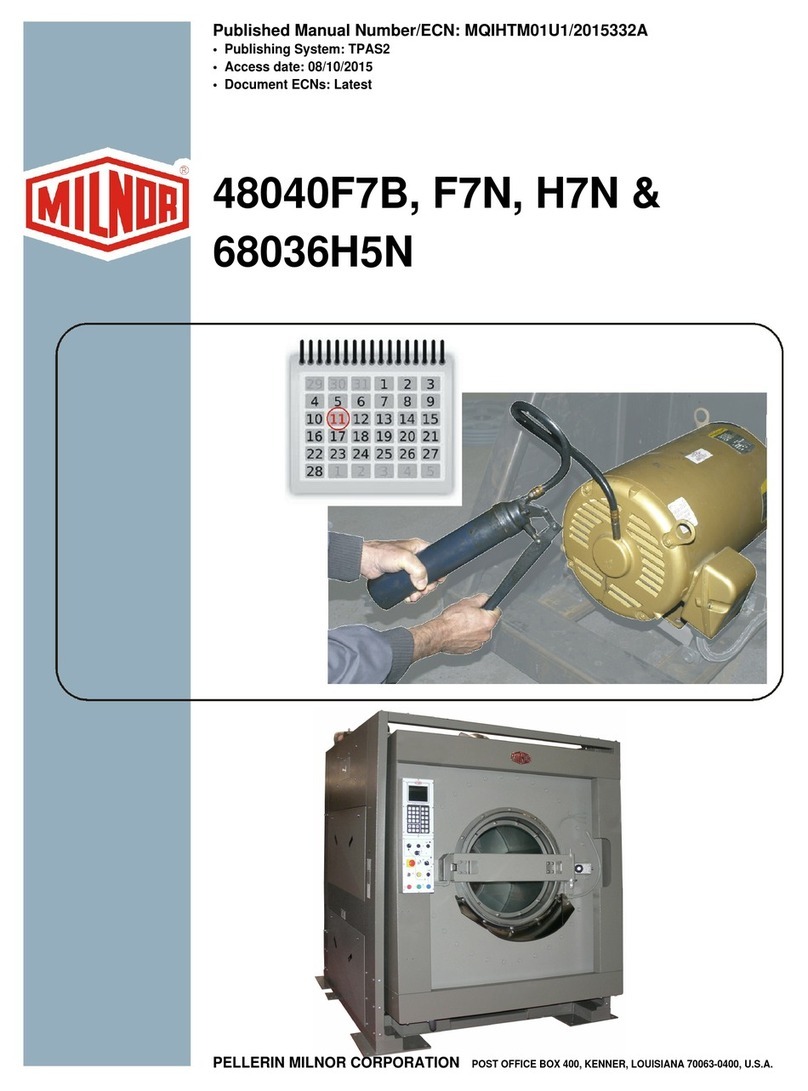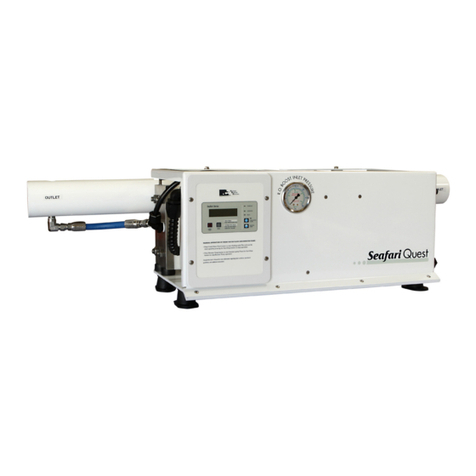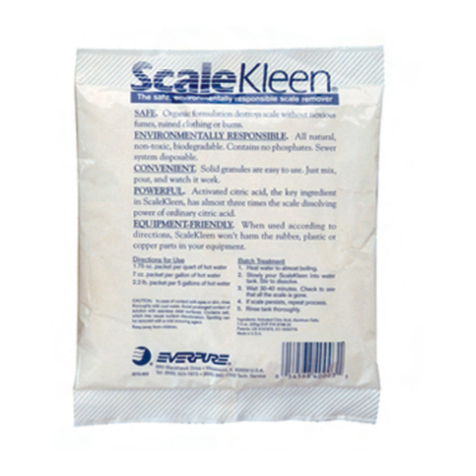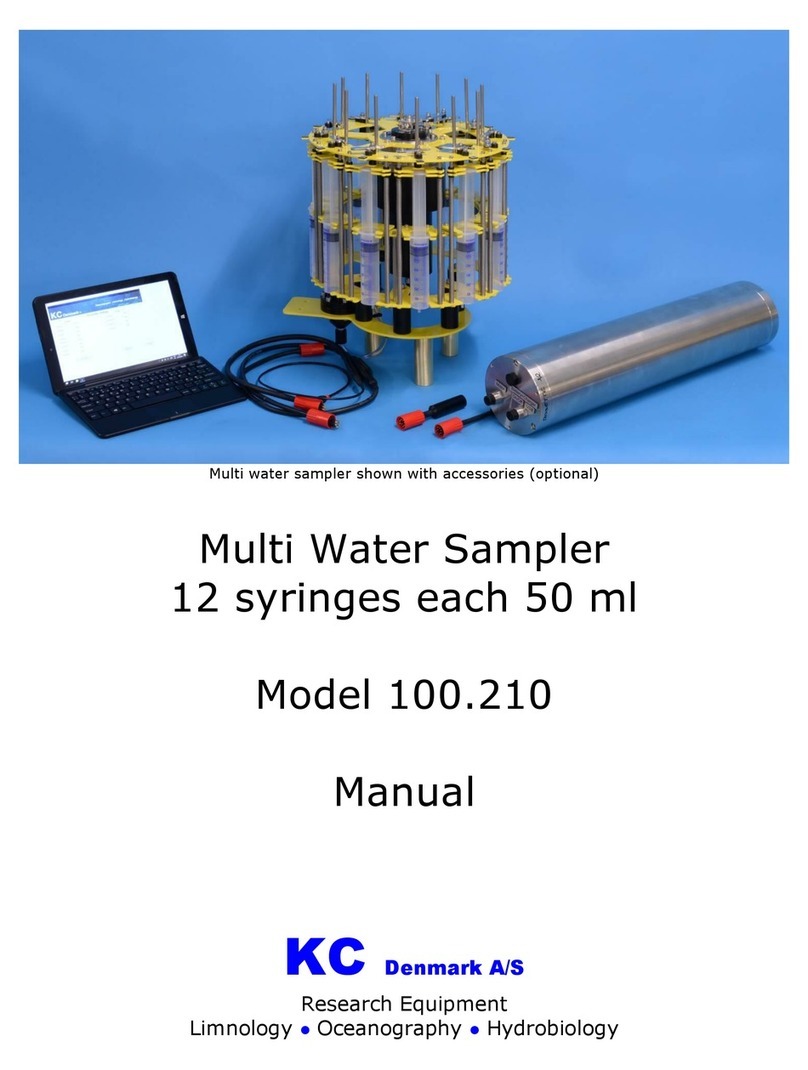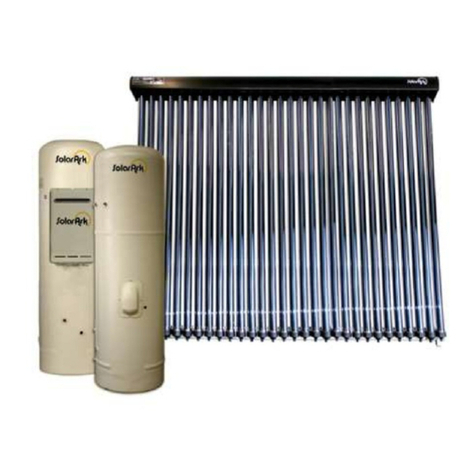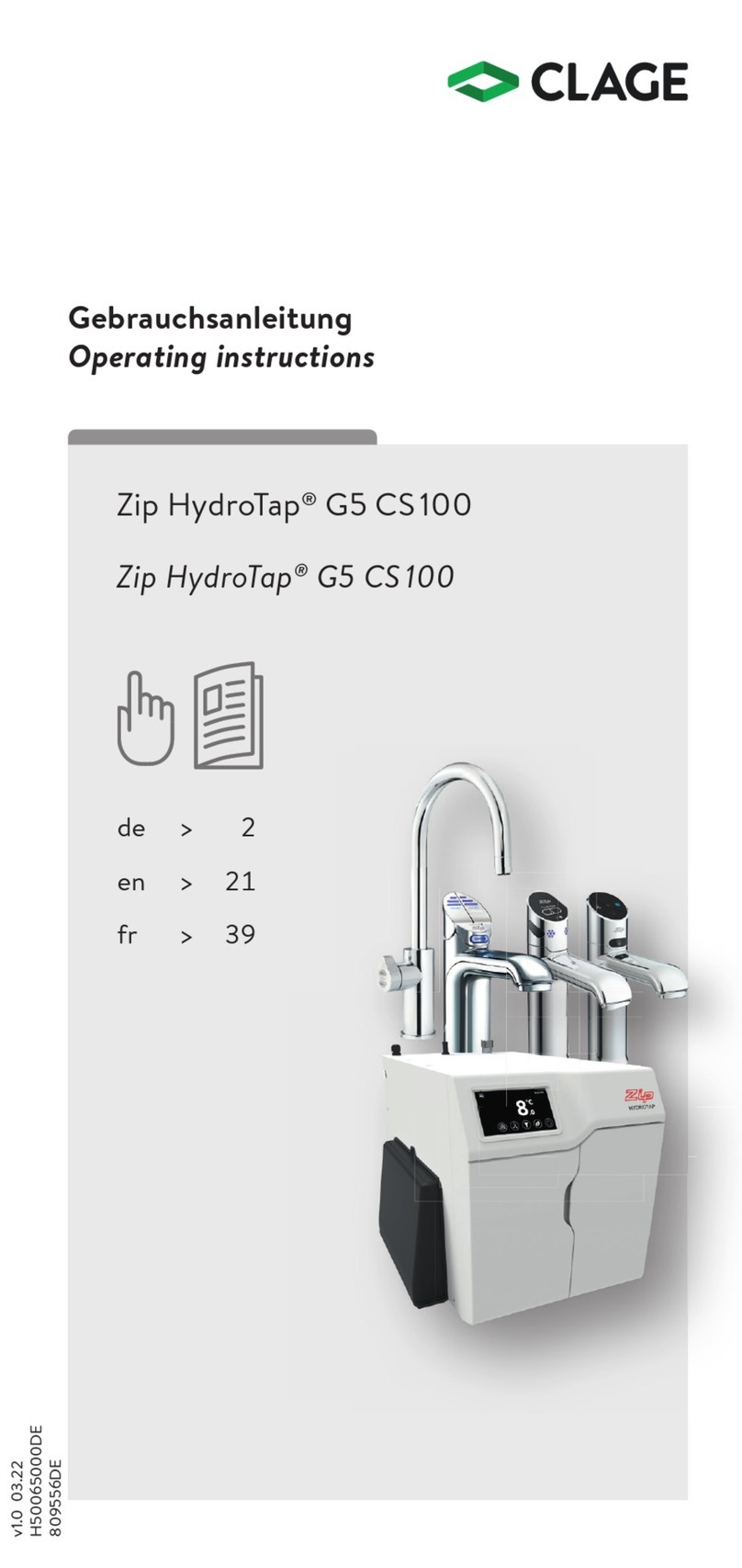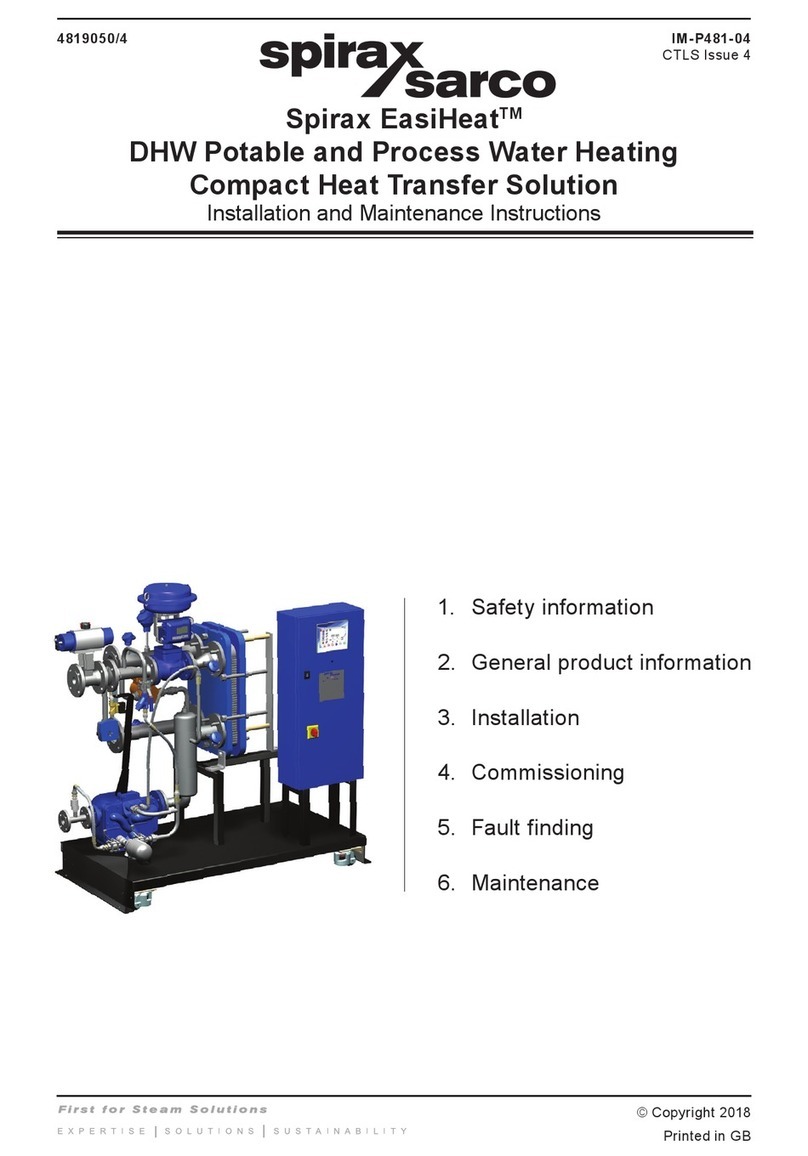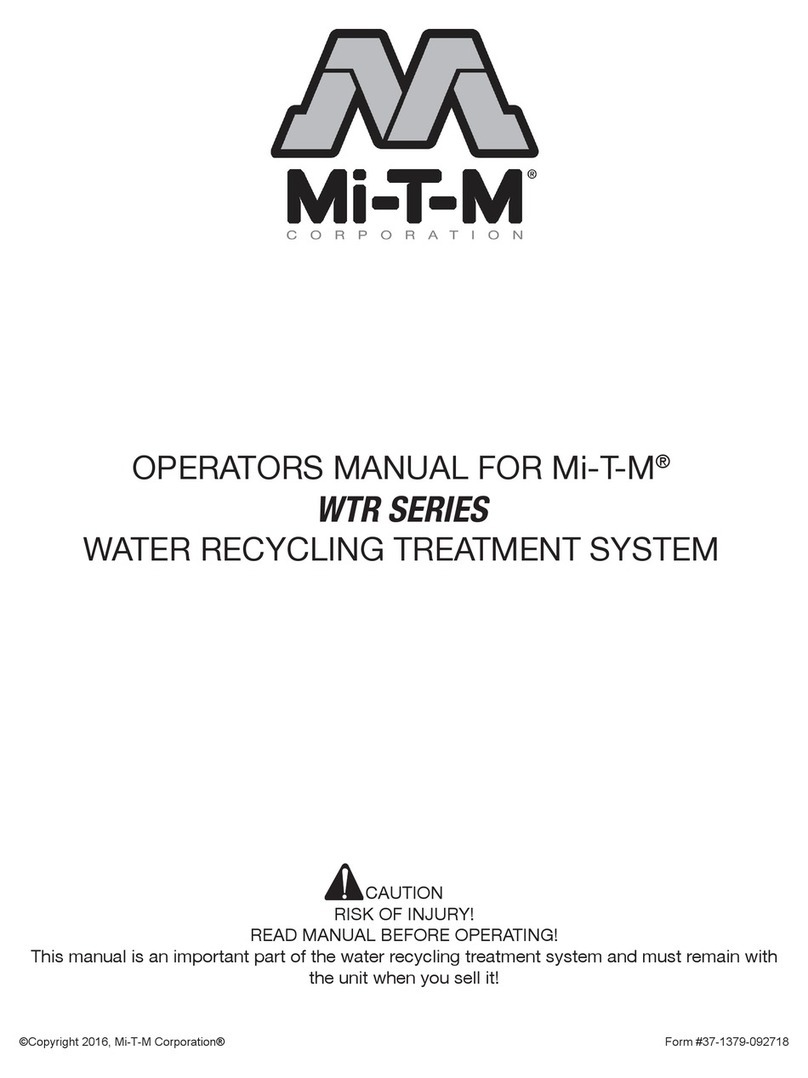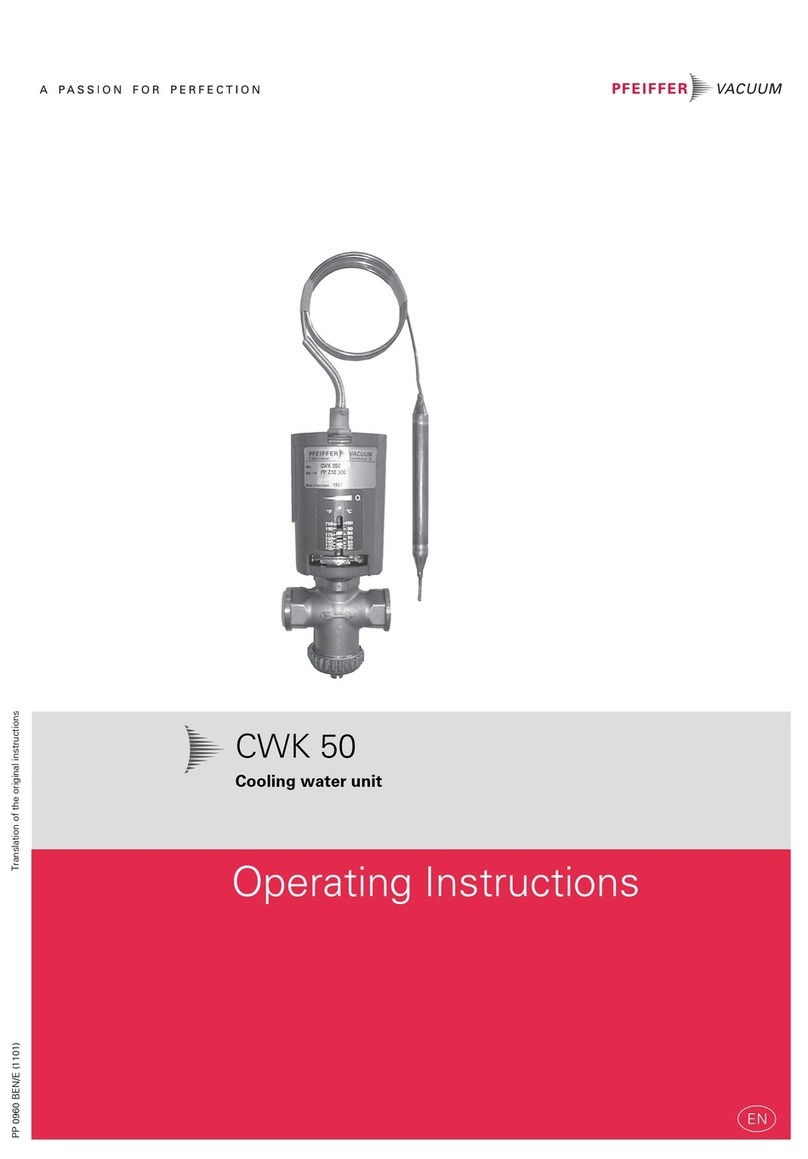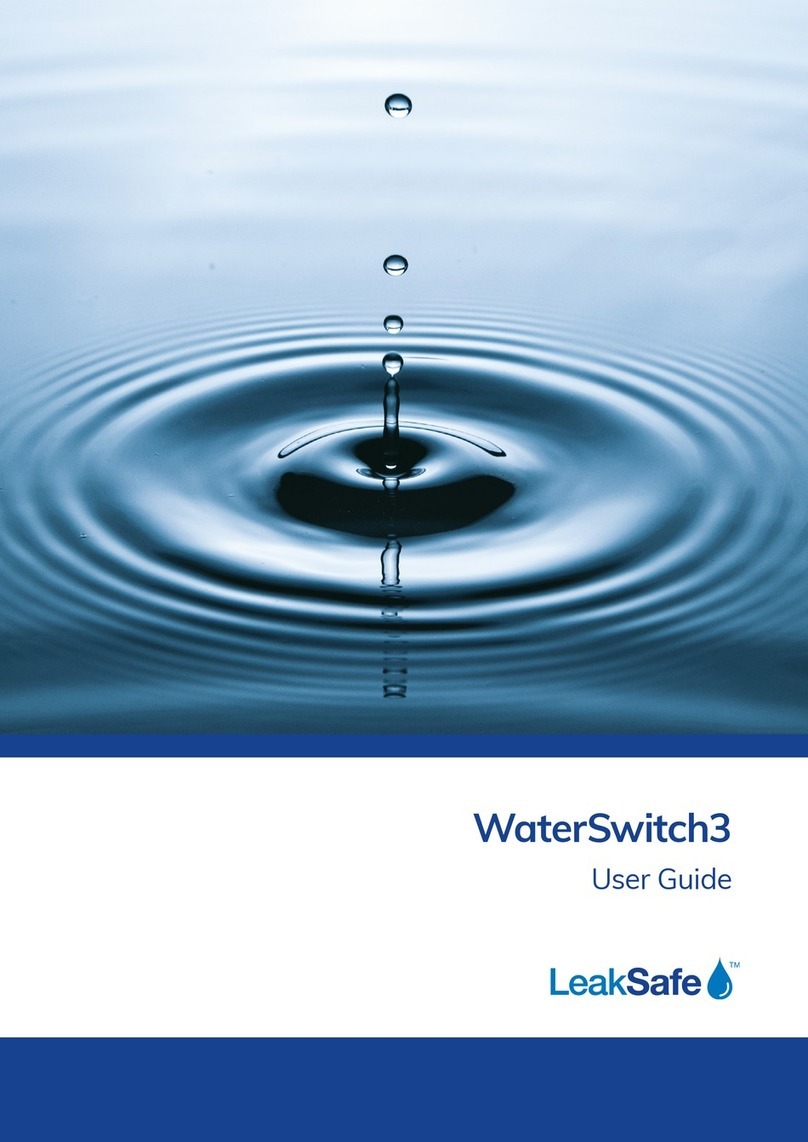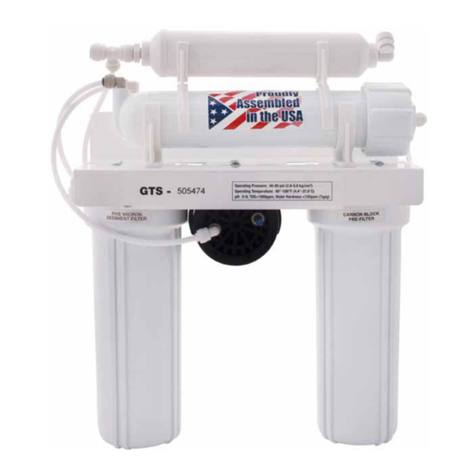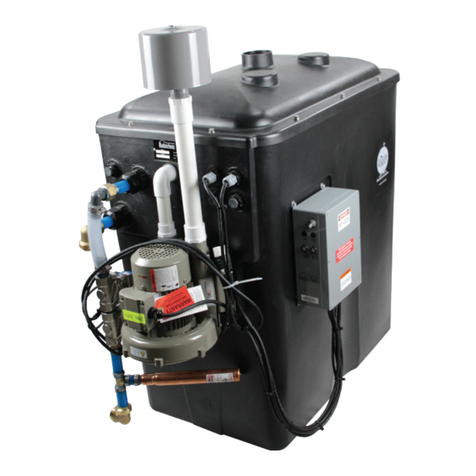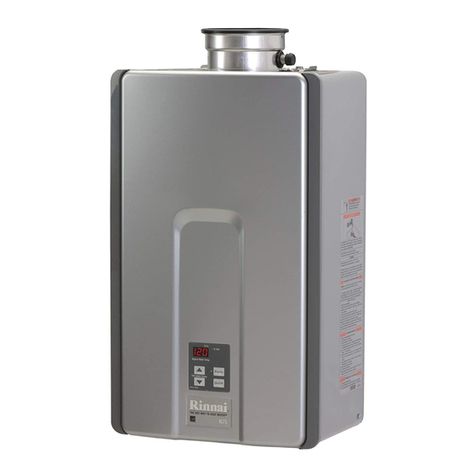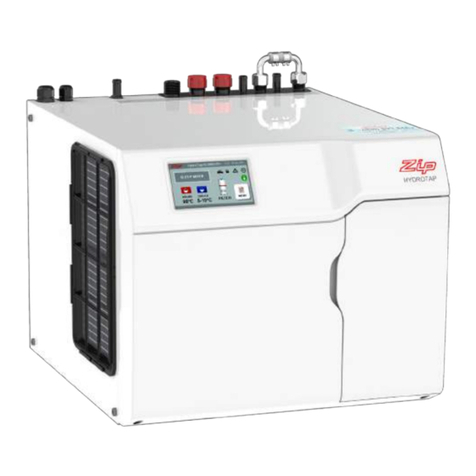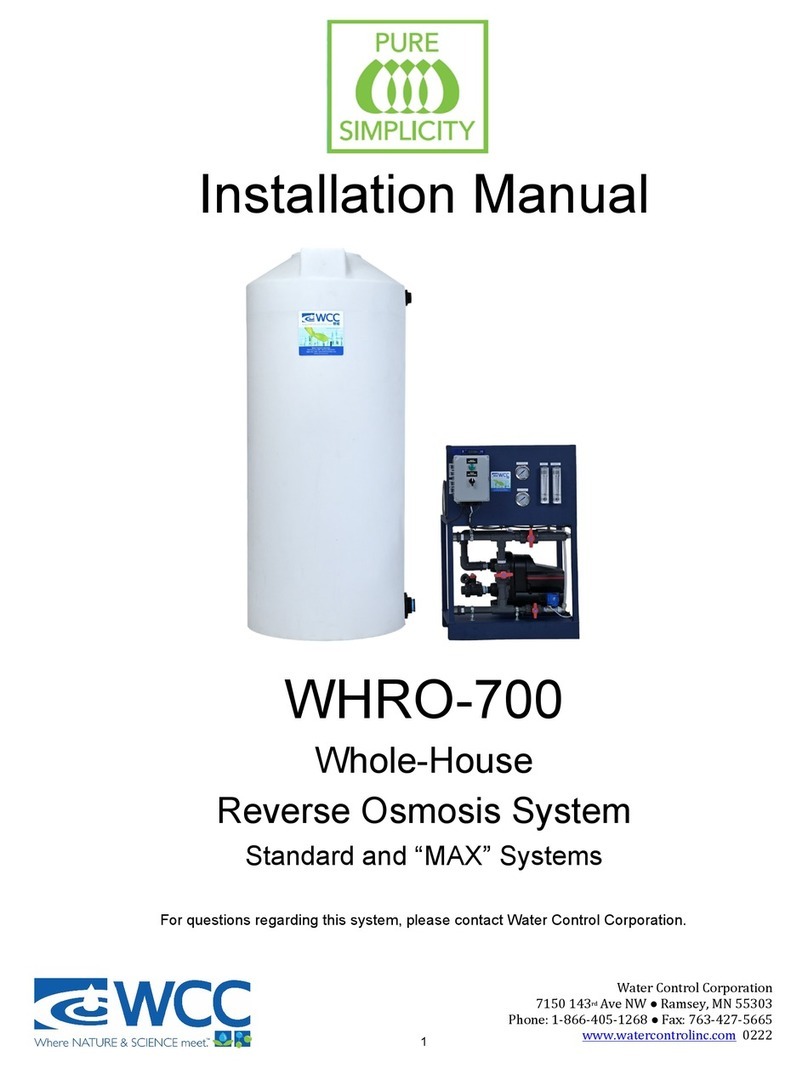
PS-5 Reverse Osmosis Drinking Water System
Troubleshooting/Maintenance
1931 205th Ave NW ·Ramsey, MN 55303
Phone: 866-405-1268 ·Fax: 763-427-5665
www.watercontrolinc.com
3
Troubleshooting A Water System That Does Not Deliver (Enough) Water to the Faucet
The typical questions to ask when troubleshooting an RO system with a product delivery issue are:
1. Is the feed line providing sufficient water to the unit?
2. Is the Automatic Shut Off Valve Working?
3. Is the membrane producing water correctly?
4. Is the storage tank working correctly?
5. Is the postfilter clogged?
If everything was working well and suddenly there was no water at all then number 2 is the most likely
candidate. If everything was working well and the volume of water that the system would deliver was
drastically reduced, then number 4 is the most likely candidate.
1. Is the feed line providing water/pressure to the unit? Turn off feed water. Disconnect the green
tube from the feed valve on the RO system side of the valve. Direct the valve into a bucket and
open the feed valve. You should get a strong stream without interruption. If you do not get a
strong stream, your RO system is not getting the flow and pressure it needs. Find out if your feed
connection is clogged or if there is something wrong with your plumbing or installation. If you do
have a good, strong stream, turn off the feed valve. Reconnect the green feed tubing to the valve.
2. Is the Automatic Shut Off Valve (ASOV) working? Is there water going down the drain? If there is,
then the ASOV is not likely to be the problem. If no water is flowing through system, none down
the drain, turn feed water off. Close tank valve. Open faucet until no water comes out then close
faucet. Disconnect membrane vessel from frame. Open feed water slowly. If water does not come
out of fitting where membrane vessel was connected, ASOV needs to be replaced. On a PS-5 the
water should come out of the fitting at the top.
3. Is the membrane producing water? If water is going down the drain but very little is coming out of
faucet, it could be that membrane is not producing sufficient water. Test the flow by closing the
tank valve and then opening the faucet. Use a measuring cup. A healthy membrane with good
feed pressure should output approximately four ounces (or 130 ml) per minute (60 seconds). If it
is less than 2 ounces (60 ml) per minute, disconnect the system drain line from your sink drain
saddle and check brine flow rate. System drain line flow rate should be approximately 7ounces
(220 ml) per minute, if it is less than 4 ounces (120 ml) per minute, either your house pressure is
below 40 psi or your membrane vessel is clogged. If brine flow is between 5 and 9 ounces (150 -
265 ml) per minute, it is probably time for a new membrane.




